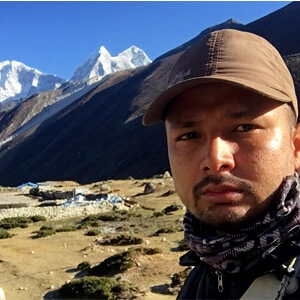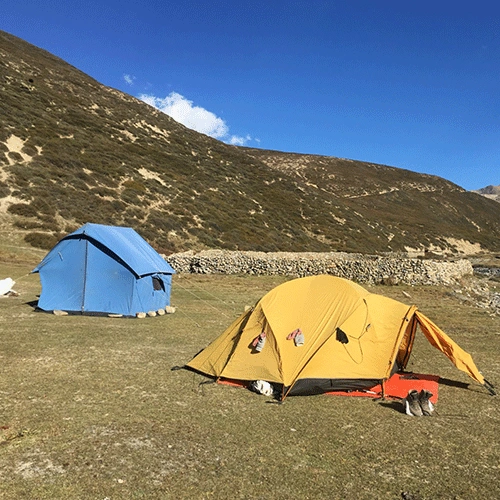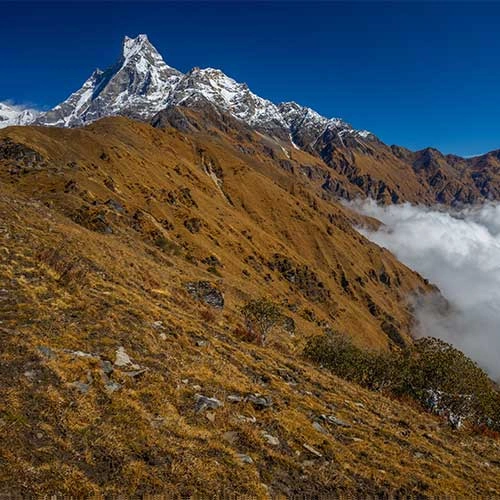Highlights of the Manaslu Trek
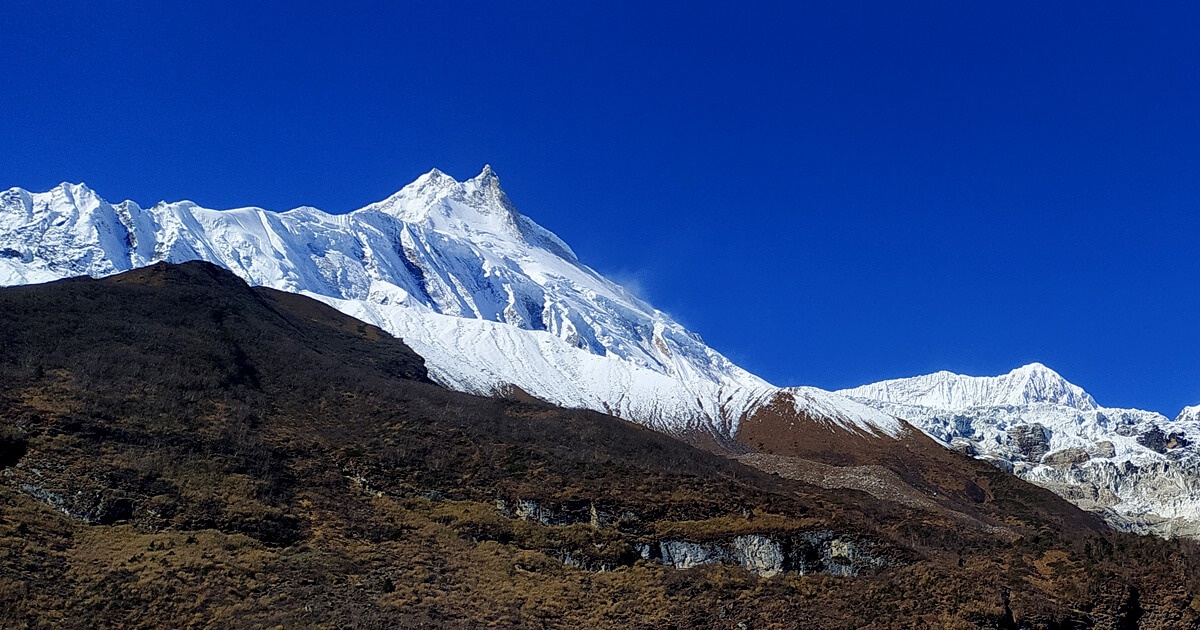
- Clear and unobstructed beauty of the 8th-tallest mountain in the world, Mt. Manaslu
- Marvelous beauty of other mountains like the Annapurna range, Himlung Himal, Cheo Himal, Ganesh Himal, Lamjung, Ngadi Chuli, and many more
- Monasteries like Kargyu-Pemba Chholing Gompa, Labrang Gompa, Pungyen Nunnery, and many more
- Journey to the Larkya La Pass, the highest point of the trek, lies at an altitude of 5106m
- Passing through the diverse Himalayan flora and glimpses of Himalayan wild species like the Himalayan Tahr, Red Panda, Snow Leopard, and many more
- Insights into the Himalayan lifestyle and Buddhist practices
- Delectable cuisines and warm hospitality
- Journey through cascading waterfalls, soaring rivers, magical glaciers, tranquil lakes, and many more
- Exploration of Budhi Gandaki Valley and Manaslu Conservation Area
Manaslu Circuit Trek Best Time
- Spring (March to May)
- Autumn (September to November)
Manaslu Trek in Spring
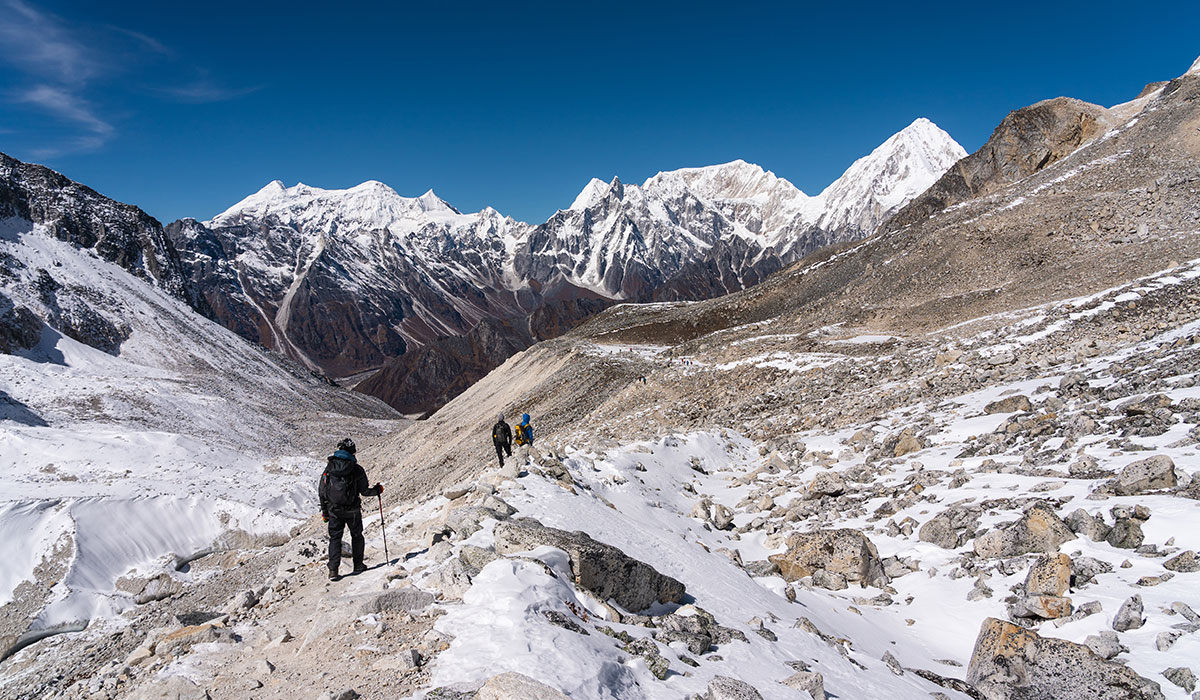
The Manaslu Trek in Spring encompasses trekking options from March to May. The Spring season comes after winter and before the Monsoon and is one of the best times for the Manaslu trek. Due to the suitability of the climatic conditions and crisp, clear mountainous views, Himalayan trekking is most suitable in Spring.
Unlike winter, spring summons stable weather and offers you a wonderful experience. We’ve also asked our previous trekkers who went through us and our experienced guide for their reviews, and they cannot deny the fact that Spring is a wonderful time for any enthusiastic trekkers or beginners to embark on the high Himalayan trekking journey.
Manaslu Trek in March
March is the beginning of the Spring season and marks the beginning of the farewell to the winter season. The temperature starts to rise from extreme coldness while making days warmer. While the early days of March can show some impacts of the winter coldness, with time, the temperature starts to settle to moderate and provides you with a comfortable trekking experience.
During this time, you can start to immerse yourself in the freshness of Spring when flowers go through the process of blooming. Everything around you appears lush and lovely due to flower buds that are just beginning to open and the green pigments on tree leaves. This is the month when individuals begin to reopen their lodges and business picks up. You can feel the maximum thrill and adventure from your walk because of the chilly climate.
Manaslu Trek in April
The Spring season starts to reach its peak with blooming flowers in the surroundings, greenery scenery, and moderate temperatures. The temperature during this time ranges from 6-12 degrees Celsius, with moderate temperatures at night. During this time, you’ll be able to experience the wonders of nature in peace with no disturbances along the way. You’ll be able to enjoy the picturesque views of the mountain that will seem more like heaven to you.
With vibrantly colored flowers in bloom and breathtaking views of the mountains, nature is at its most magnificent state. The days during this time are longer, which provides you with more room for Himalayan exploration. The favorable weather conditions of April reduce the risks of extreme coldness and its effects like frostbite and hypothermia. This also alleviates weather-related issues like rainfall, snowfall, and heavy windstorms, and lets you have a safe and secure journey.
Manaslu Trek in May
May marks the peak of the spring season and is one of the best months to plan your adventure trip to Manaslu. With clear skies, stable weather, and mild temperatures, you can enjoy the journey without worrying about rainfall, landslides, snowfall, or slippery trails. The route takes you through lush green valleys, blooming rhododendron and pine forests, and offers a higher chance of spotting rare Himalayan wildlife such as the Himalayan Tahr, Red Panda, Eagles, and even the elusive Snow Leopard.
The safe and well-maintained trails in May reduce the risk of sickness or injury, allowing you to trek at a comfortable pace. Daytime temperatures range between 12°C and 30°C, while nights remain pleasantly cool. This perfect climate enhances the experience of crossing traditional villages and witnessing breathtaking Himalayan panoramas glowing under the golden sunrise.
Choosing the Manaslu circuit Trek in May rewards you with vibrant flowers, fresh mountain air, and mesmerizing landscapes—making it an unforgettable Himalayan adventure.
Manaslu Trek in Autumn
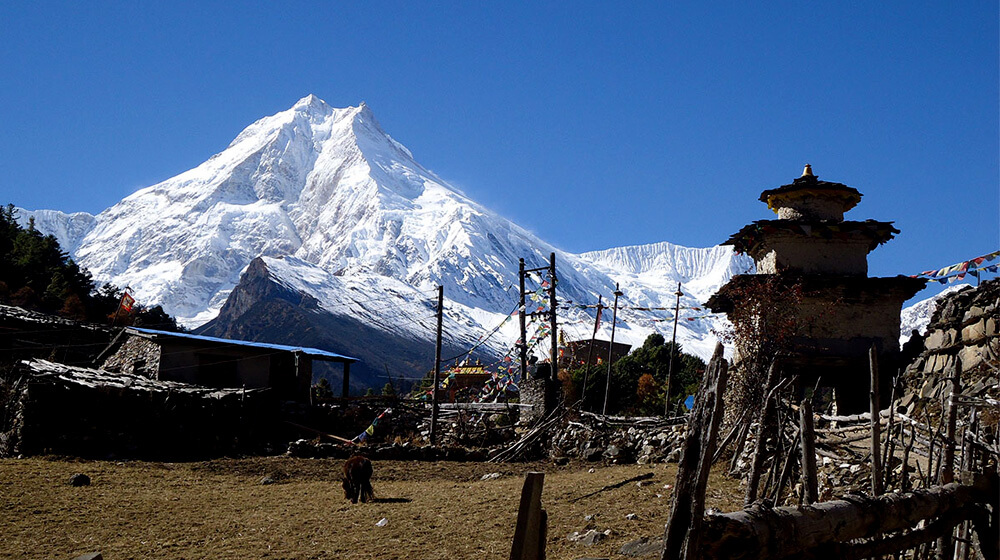
Autumn is another good time to trek the Manaslu Trek with the suitability of climatic conditions. Autumn encompasses September, October, and November and is a favorable time for you to decide on any high Himalayan trekking journey. Autumn arrives by bidding farewell to the Monsoon and before the winter season and presents favorable climatic conditions. The peak season of trekking to the Himalayan region in Nepal falls during autumn and this is the finest time of year to visit both at lower and higher altitudes because of the clear, crisp sky and cool, pleasant weather found in nature.
Rainfall is unlikely, so you can travel in peace. Since the pathways are dry, hiking is easier and convenient. While autumn is a peak time for tourism, you can experience a bit of a crowd during your trekking journey, but planning your trek through us will let you acquire first-class services in the top-notch treehouses without any issues and competition. On top of that, autumn brings vibrant weather with numerous grand festivals of Nepal. Planning your journey during autumn not only provides you with stunning Himalayan beauty but also creates space for immersion in a cultural and festive atmosphere.
Manaslu Trek in September
September is the first month of autumn that arrives by bidding farewell to the monsoon season. For the Manaslu Trek or any other high Himalayan trekking journey, September is considered to be an ideal option for trekking. It is because the temperature and weather tend to stay stable during this month, and this assures you a safe and secure journey with no heavy climatic challenges. While early September may indulge you with occasional rainfall and effects of post-monsoon, with time, the climate tends to be moderate and stable.
With the arrival of September, you’ll also be presented with the vibrant atmosphere of autumn. You’ll begin to relish in the vibrant atmosphere of autumn from mid-September. The temperature starts to fall in the morning and night and ranges about 5-10 degrees Celsius. If you’re planning your Manaslu Trek during the month of September, it is better to be equipped with the necessary trekking gear, essential clothing, raincoats, and a wind sweater. As the month can summon the effects of the Monsoon in the early half of September, it is best to be mindful of such changes and be prepared accordingly.
Manaslu Trek in October
October is one of the best months for the Manaslu Circuit Trek, offering excellent visibility, warm days, and stable weather. By this time, the monsoon is long gone, reducing challenges like rainfall, snowfall, slippery trails, floods, landslides, avalanches, and pesky insects. The surroundings come alive with vibrant autumn colors, creating perfect conditions for trekking in Nepal.
A unique highlight of trekking the Larke-La Pass in October is the celebration of Dashain, Nepal’s biggest festival. Planning your trek during this time allows you to not only enjoy breathtaking Himalayan views but also immerse yourself in the rich cultural traditions and festive atmosphere of the region.
On top of that, the temperature during this time ranges from 12-15 degrees Celsius, making the day warm with a moderate night. While in higher elevations, you may feel cold, which is why it is important to pack your bag with both summer and winter clothes, despite the selection of suitable time. The Himalayan trekking encompasses a wide range of challenges, and weather fluctuations fall under that category as well. Being mindful of sudden weather fluctuations is necessary, and being equipped with the necessary gear and clothes is essential.
Manaslu Trek in November
November is another ideal time for any high Himalayan trekking journey. The autumn season tends to reach its peak by the arrival of November, making it the best time for adventurous visits, trekking, or mountain climbing. The month of November presents you with the marvelous beauty of the Himalayas with no obstruction. On top of that, the journey tends to be stable and secure, with no forthcoming obstacles along the way. Along with that, another major highlight of the Manalsu Trek in November is the grand festival of Nepal, Tihar (Festival of Lights). During this time, you’ll be able to witness local dances to traditional music and delve into numerous delectable cuisines.
While November is an ideal time to embark on the Manaslu Trek, there are some factors that trekkers should consider. As November is the month in the early winter season, there can be some winter effects like coldness and temperature fluctuations in the higher altitude regions like Samdo and Samagaon. The temperature generally stays normal and ranges around 12-15 degrees Celsius in the lower region, while it can fluctuate and range from -3 to -6 degrees Celsius in the higher altitudes. Therefore, it is important to consider such factors and be ready for any sudden challenges along the way. Being equipped with the necessary trekking gear and warm clothes is equally important.
Difference in Spring and Autumn for Manaslu Trek
While both Spring and Autumn are considered to be favorable times for hopping on the Manaslu Trek, there are certain factors in each season that will help you in considering the preferred seasons.
Reasons to choose Spring over Autumn for Manaslu Circuit Trek
- The Manaslu Trek encounters more crowds during the Autumn season. If you’re seeking peaceful and alone time in the presence of the Himalayas, it is best to seek your journey during Spring. Spring also encounters tourism at its peak, but it's generally less in comparison to Autumn.
- Another major reason for you to choose Spring over Autumn is that your journey will be through the blooming Himalayan flora during Spring. You’ll also be able to encounter Himalayan wild species along the way. Along with that, you’ll be able to acquire top-notch facilities at teahouses or lodges without competition.
- The days of Spring are relatively longer than the days of Autumn. This will provide you plenty of time to take in the breathtaking scenery and see more Himalayan locations. This also lowers the likelihood of having to postpone or cancel the trip. In addition, longer days let you delve into the Himalayan beauty for a longer period, along with explorations of local settlements and nearby sightseeing places.
Reasons to choose Autumn over Spring for the Manaslu Trek
- The early Spring may impose post-winter effects, while the late Spring may cover some impacts of the Monsoon. While the temperature and weather tend to stay stable, Spring is hotter in comparison to autumn. Exploring the Himalayan settlements and hopping on the journey to reach the heartland of Mt. Manaslu is ideal in Autumn, with moderate temperatures in comparison to Spring.
- The autumn season oozes out a vibrant atmosphere around. Along with that, autumn arrives after the monsoon, and the monsoon rains will clear the skies and present you with the transparent beauty of high Himalayan Peaks. The views will leave you awestruck and instill tranquility within. On top of that, you can relish the vibrant glow over mountains like an autumn filter.
- Along with that, Autumn is an ideal season as it encompasses the grand festivals of Nepal. Some of the major festivals that fall during this season are Dashain, Tihar, Mani Rimdu, and many others. This presents you with an outstanding opportunity to view the beauty of the mountains while immersing in a distinct cultural and festive atmosphere. This will ultimately provide you with a wonderful experience through extensive cultural explorations, a safe and secure journey, and magnificent Himalayan sightseeing.
You may also like:
What is it like to head for the Manaslu Trek in Winter?

The Manaslu Trek in winter is quite challenging compared to favorable trekking options like the Manaslu Trek in Spring or Autumn. This is because winter summons climatic issues along the way, which makes it comparatively challenging and riveting compared to Spring and Autumn. While it can be quite challenging, the trek can be entirely done with proper preparations and essential packing. The journey can be tough and demands extensive packing of both summer and winter clothes.
Winter encompasses the months of December, January, and February. The Manaslu region transforms from a vibrant environment into a winter wonderland of snow during this time. The temperature usually ranges from 6-12 degrees Celsius during this time. The Manaslu Trek in winter leads to situations like extreme coldness and its impacts like frostbite and hypothermia. Heavy snow during this time also makes it challenging to accomplish the trek and cross Larkya La Pass. This demands strong physical strength, mental resilience, proper packing, and sheer determination.
Pros of Manaslu Trek in Winter
- The Manaslu Trek in Winter encounters less numbers of trekkers. As winter is considered an off-season for trekking to the Manaslu region, the trails will be stepped by fewer people. This will let you enjoy the beauty of nature in peace. This also creates space for further Himalayan exploration and instills tranquility
- Trekking to the Manaslu region during winter lets you witness the clear and transparent beauty of Himalayan vistas. The weather remains dry and clear, and this lets you enjoy the magnificent beauty of the Himalayas. Immersing in a serene atmosphere and witnessing the clear vision of snow-capped mountains is an outstanding experience.
- Another major pros of the Manaslu Trek in Winter is that the journey will let you have a unique experience with Himalayan exploration and opportunities to interact with locals. The challenging adventure is a pure testament to your sheer determination and offers you an adrenaline-pumping experience. On top of that, winter being off-season, you’ll save extra cash by embarking on the Manaslu Trek during this time.
Cons of Manaslu Trek in Winter
- One of the major issues of Manaslu Trek in Winter is climatic conditions. The winter season summons harsh weather and conditions like extreme coldness, temperature fluctuations, icy trails, and snowfall. This can pose issues along the way and on top of that, the days are shorter compared to other seasons.
- Heavy snowfall and snowy trails will make it challenging to cross the Larkya La Pass. Along with that, winter being off-season can lead to the closing of some teahouses and lodges in the higher altitude. This can reduce the options of acquiring top-notch accommodation and food, which is another major challenge of Manalsu Trek in Winter.
- The harsh weather conditions of weather can lead to minor sickness along the way. The snowy trails can lead to minor injuries as well. On top of that, it has chances of cancellation or postponement of the trek due to unstable weather conditions. Along with that, winter also has a risk of avalanches at higher altitudes and scarcity of needed supplies and services.
What is it like to head for Manaslu Trek in Monsoon?

While it can be done with proper preparations and planning, monsoon isn’t the best time to trek Manaslu. Monsoon is the month of rainfall and warm days. The Monsoon season is connected to summer, which means your Manaslu Trek in Monsoon will involve active rainfall and hot temperatures. Trekking during this season will present you with a lot of challenges along the way that can turn out to be a less enjoyable experience. This season will actively bestow you with challenges like rainfall, slippery tracks, and the summoning of blood-sucking insects that will lead you to have a great time during your trekking.
It's like an added burden that you need to surpass to reach Larkya La Pass. While the challenges may be on the way, accomplishing the journey by conquering forthcoming challenges is a pure testament to your sheer determination and mental resilience. The temperature in this region ranges from 10-25 degrees Celsius. The season is one of the wettest and hottest times of the year. So, if you’re considering heading for the Manaslu Trek in Monsoon, it's best to be alert to the climatic conditions and be equipped with the necessary gear and clothing.
Monsoon season encompasses June, July, and August.
Pros of Manaslu Trek in Monsoon
- Monsoon is off-season, and during this time, the Manaslu region experiences less number of tourists. This is a suitable time for you to head for the Manaslu Trek if you seek some peaceful and alone time. This lets you relish the beauty of mountains in a tranquil state.
- Another major reason for you to consider the Manaslu Trek in Monsoon is that during this time, the rainfall clears the blurry environment and gives life to the lush greenery of the region. During this time, you shall witness the lush and vibrant landscapes and give you an immense experience in the presence of suitable surroundings.
- Monsoon season does invite rainfall, but after the rainfall clears the skies, it presents you with the marvelous beauty of the Himalayan vistas. This results in providing you with a peaceful and serene trekking experience.
Cons of Manaslu Trek in Monsoon
- One of the major cons of Manalsu Trek in Monsoon is the unstable climatic conditions. The monsoon season brings heavy rainfall, and this results in a series of challenges along the way. The path turns into slippery, trekking demands through blood-sucking insects like leeches, and this also poses risks of flood and landslide. This can make trekking more challenging to reach the top of this journey, Larkya La Pass.
- The monsoon season limits the accommodation facility as you ascend. To acquire accommodation facilities in the teahouses of lodges of the high Himalayan region, you’ll have to book it in advance. Along with that, this season demands extensive wear and gear to surpass the challenges. It is quite challenging to navigate the path during this season as rainfall or weather fluctuations lead to cancellation or postponement of the trek.
- Another major con of the Manaslu Trek in Monsoon is that the frequent rain and clouds obstruct the beauty of the mountainous vistas. You won’t be able to access the clear and transparent beauty of the Himalayan vistas. Embarking on the Manaslu Trek in the Monsoon can be quite challenging and not much recommended, but if you are still enthusiastic about showcasing your trekking ability during this time, make sure to pack proper clothes and be equipped with the necessary gear.






